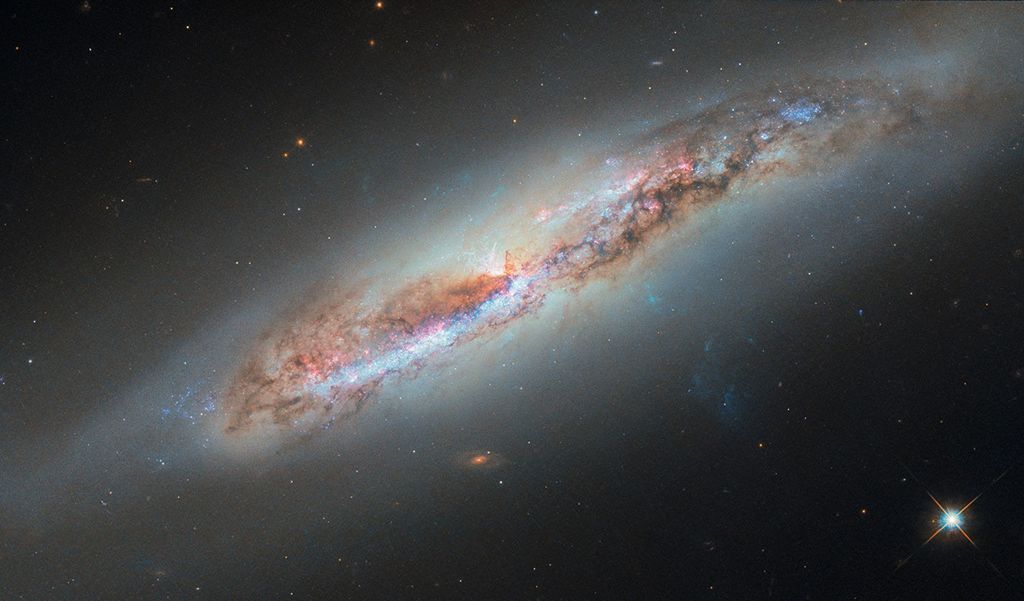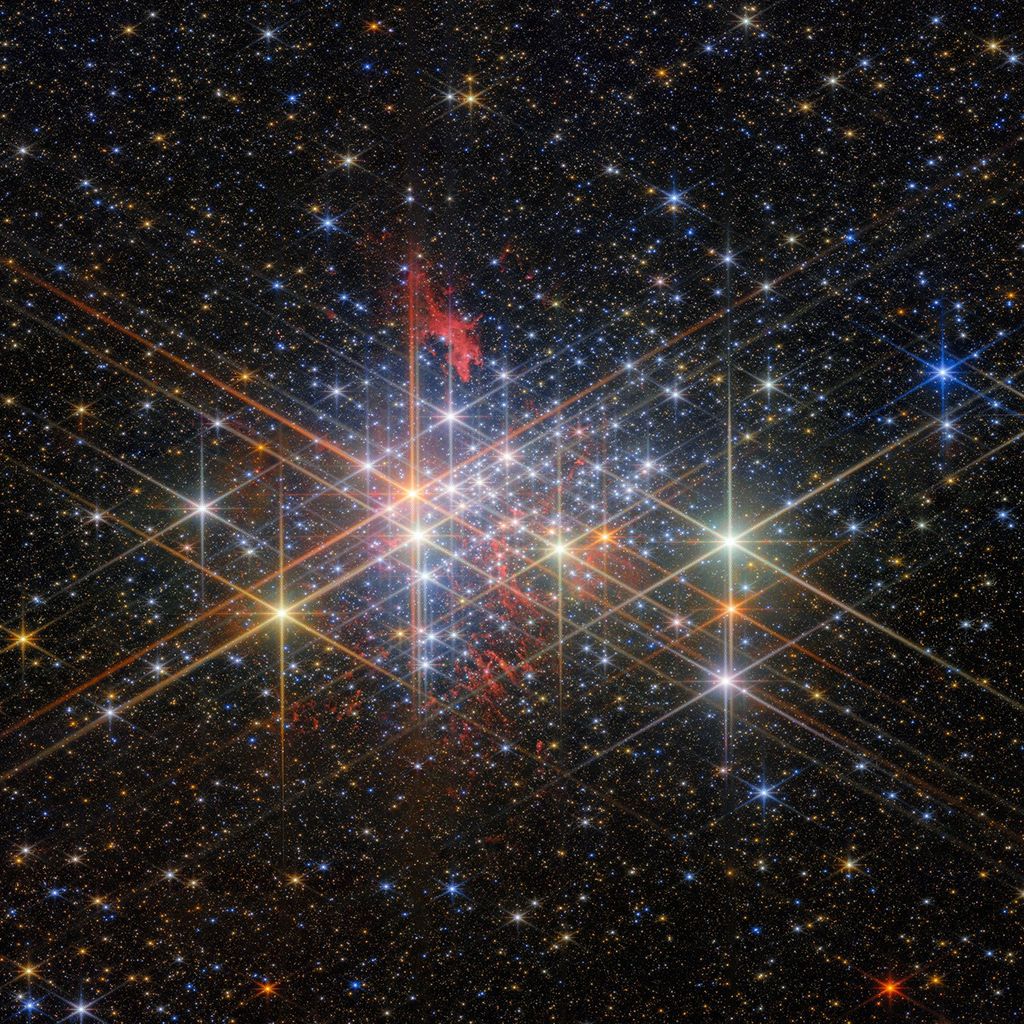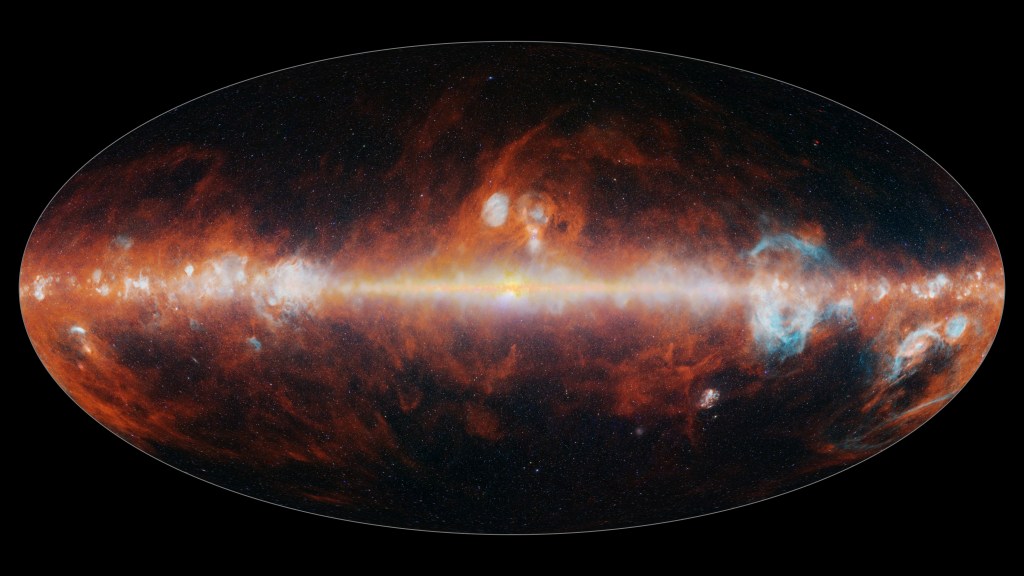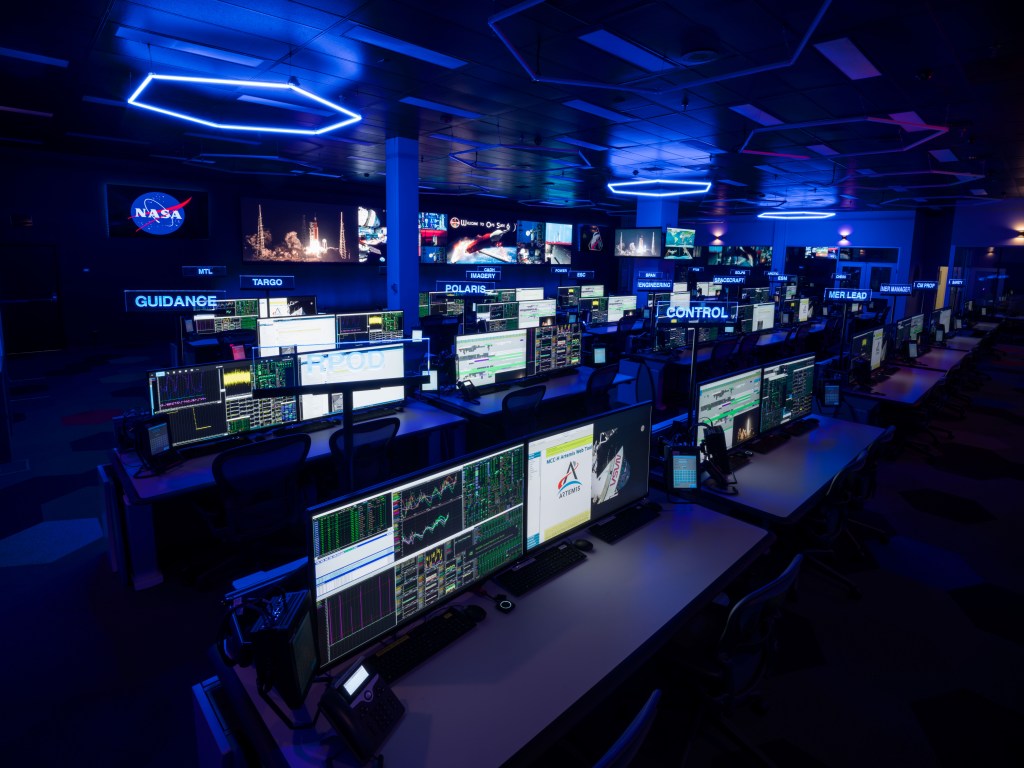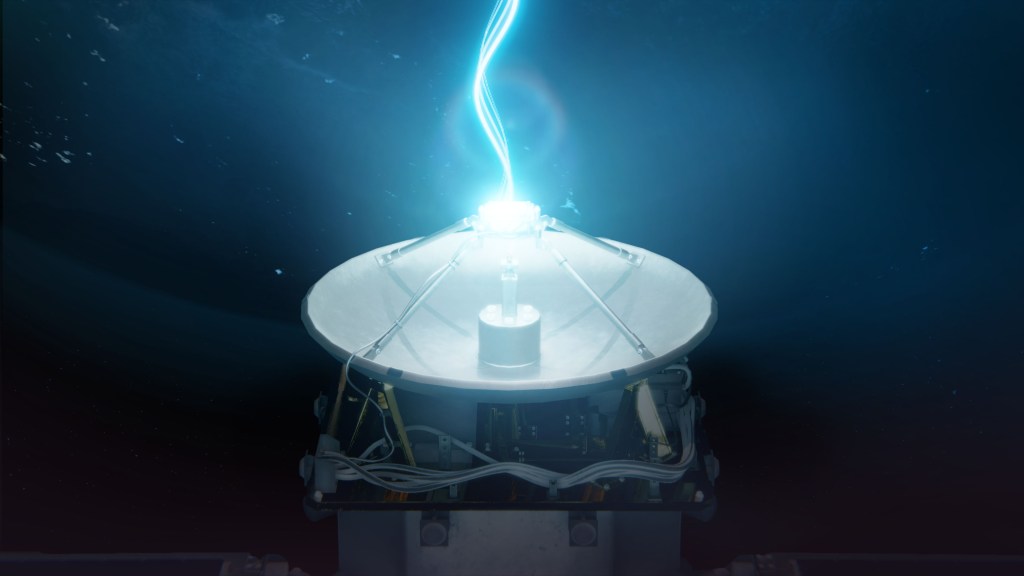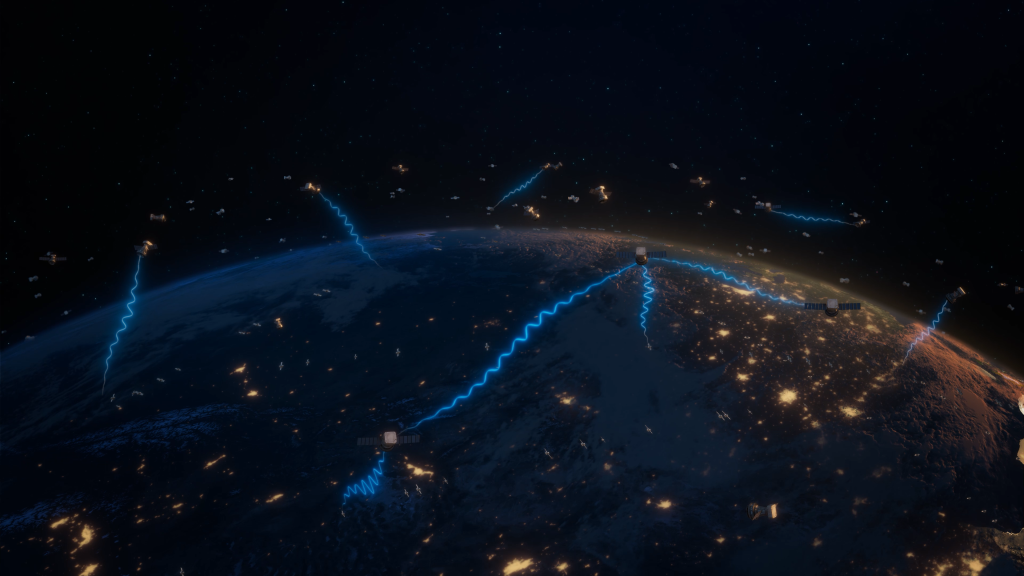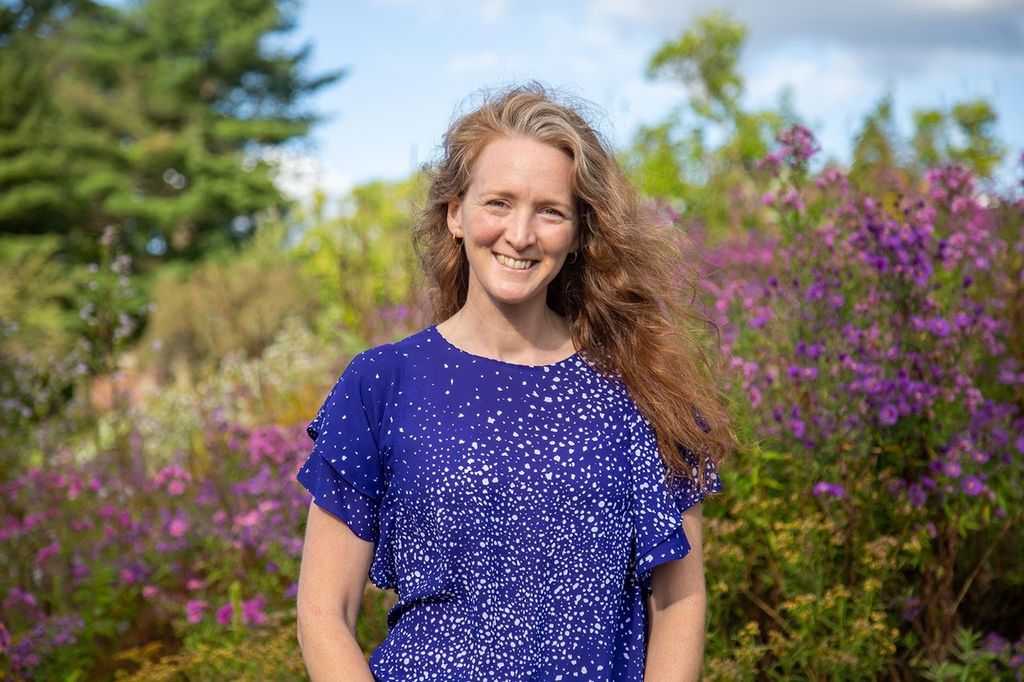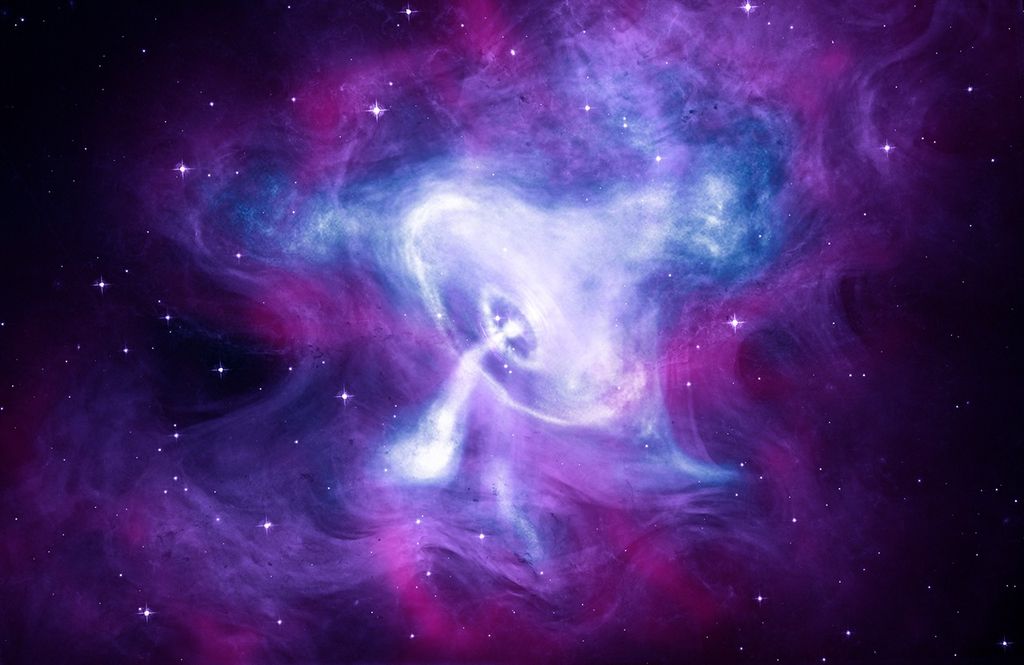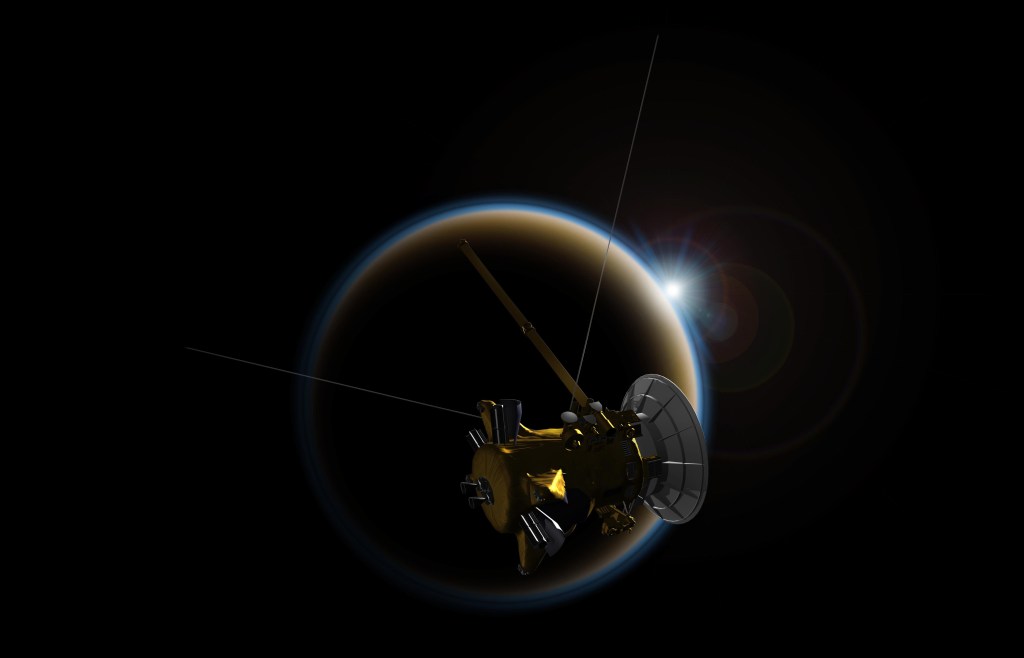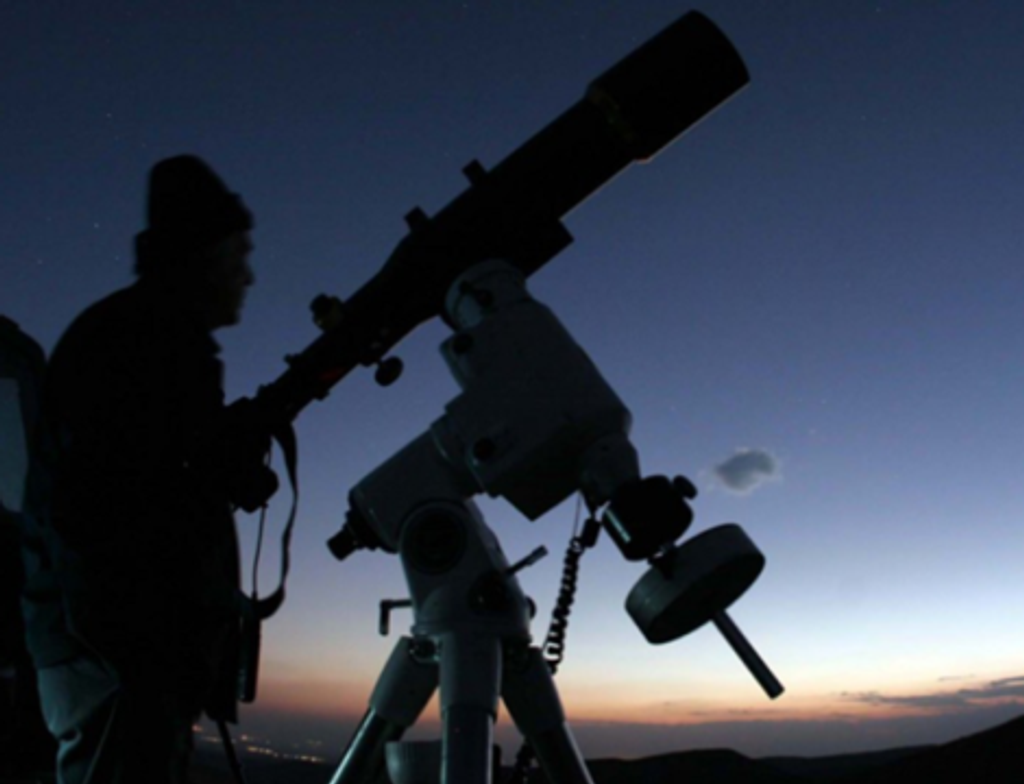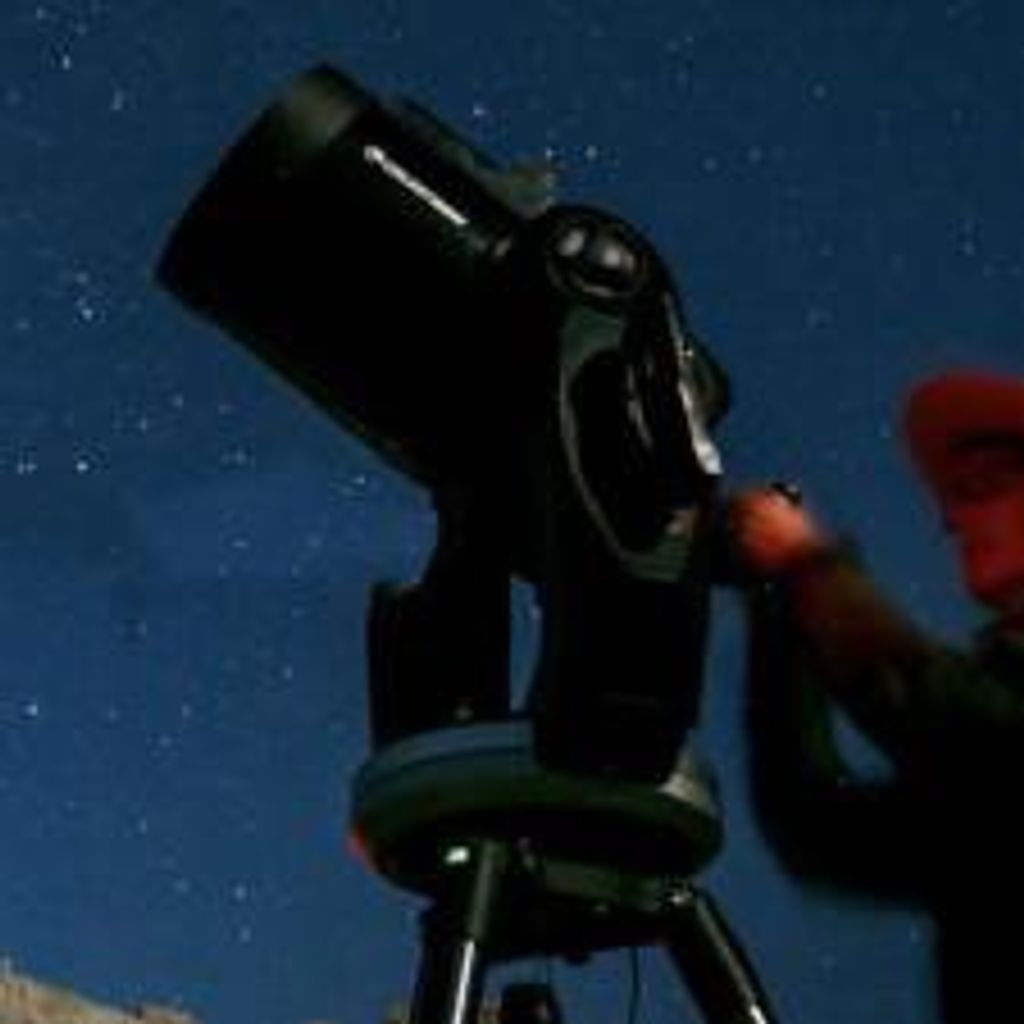1 min read
MACS J1206

Galaxy Cluster Reveals Stronger Concentration of Dark Matter than Predicted
This Hubble Space Telescope image shows the massive galaxy cluster MACS J1206. Embedded within the cluster are the distorted images of distant background galaxies, seen as arcs and smeared features. These distortions are caused by the amount of dark matter in the cluster, whose gravity bends and magnifies the light from faraway galaxies. This effect, called gravitational lensing, allows astronomers to study remote galaxies that would otherwise be too faint to see.
Astronomers measured the amount of gravitational lensing in the cluster to produce a detailed map of the cluster's distribution of dark matter. This elusive substance is the invisible glue that keeps stars bound together inside a galaxy and makes up the bulk of the universe's matter. Galaxy clusters are the largest repository of dark matter in the universe.
In addition to the dark matter smoothly distributed within the cluster, astronomers found that an expectedly large amount of it is concentrated in individual cluster galaxies. These concentrations produced gravitational lensing effects that are 10 times stronger than theory predicts.
Several of these galaxies are sufficiently massive and dense to also distort and magnify faraway sources. The galaxies in the three pullouts represent examples of such effects. In the snapshots at upper right and bottom, two distant, blue galaxies are lensed by the foreground redder cluster galaxies, forming rings and multiple images of the remote objects. The red blobs around the galaxy at upper left denote emission from clouds of hydrogen in a single distant source. The source, seen four times because of lensing, may be a faint galaxy. These blobs were detected by the Multi-Unit Spectroscopic Explorer (MUSE) at the European Southern Observatory's Very Large Telescope (VLT) in Chile. The blobs do not appear in the Hubble images.
MACS J1206 is part of the Cluster Lensing And Supernova survey with Hubble (CLASH) program and is one of three galaxy clusters the researchers studied with Hubble and the VLT.
The researchers suggest that this mismatch is either some physical ingredient that is missing in how the computer simulations are created or in astronomers' understanding of the nature of dark matter that shapes the formation and evolution of cluster galaxies.
The Hubble image is a combination of visible- and infrared-light observations taken in 2011 by the Advanced Camera for Surveys and Wide Field Camera 3.
About the Object
- R.A. PositionR.A. PositionRight ascension – analogous to longitude – is one component of an object's position.12:06:11.97
- Dec. PositionDec. PositionDeclination – analogous to latitude – is one component of an object's position.-08:48:00.03
- ConstellationConstellationOne of 88 recognized regions of the celestial sphere in which the object appears.Virgo
- DistanceDistanceThe physical distance from Earth to the astronomical object. Distances within our solar system are usually measured in Astronomical Units (AU). Distances between stars are usually measured in light-years. Interstellar distances can also be measured in parsecs.4.5 billion light-years (1.2 billion parsecs)
- DimensionsDimensionsThe physical size of the object or the apparent angle it subtends on the sky.Image is 2.25 arcmin across (about 2 billion light-years)
About the Data
- Data DescriptionData DescriptionProposal: A description of the observations, their scientific justification, and the links to the data available in the science archive.
Science Team: The astronomers who planned the observations and analyzed the data. "PI" refers to the Principal Investigator.This image was created from HST data from proposal 12069: M. Postman (STScI) et al. - InstrumentInstrumentThe science instrument used to produce the data.HST ACS/WFC, WFC3/IR; VLT/MUSE
- Exposure DatesExposure DatesThe date(s) that the telescope made its observations and the total exposure time.April-July 2011
- FiltersFiltersThe camera filters that were used in the science observations.ACS/WFC: F435W (B), F475W (g), F606W (V), F625W (r), ACS/WFC F775W (i), F814W (I), and F850LP (z) WFC3/IR: F105W (Y), F110W (YJ), F125W (J), F140W (JH), and F160W (H), VLT/MUSE: LyA;
- Object NameObject NameA name or catalog number that astronomers use to identify an astronomical object.MACS J1206.2-0847, MACS 1206
- Object DescriptionObject DescriptionThe type of astronomical object.Galaxy Cluster
- Release DateSeptember 10, 2020
- Science ReleaseHubble Observations Suggest a Missing Ingredient in Dark Matter Theories
- Credit

This image is a composite of many separate exposures made by the ACS and WFC3 instruments on the Hubble Space Telescope using ten different filters. The color results from assigning different hues (colors) to each monochromatic image. In this case, the assigned colors are: Blue: ACS/WFC F435W (B), F475W (g), F606W (V) + F625W (r) Green: ACS/WFC F775W (i) + F814W (I) + F850LP (z) Red: WFC3/IR F105W (Y) + F110W (YJ) + F125W (J) + F140W (JH) + F160W (H) This image includes an overlay showing Lyman-alpha data from the ESO/VLT MUSE instrument in magenta.

Share
Details
Claire Andreoli
NASA’s Goddard Space Flight Center
Greenbelt, Maryland
claire.andreoli@nasa.gov

